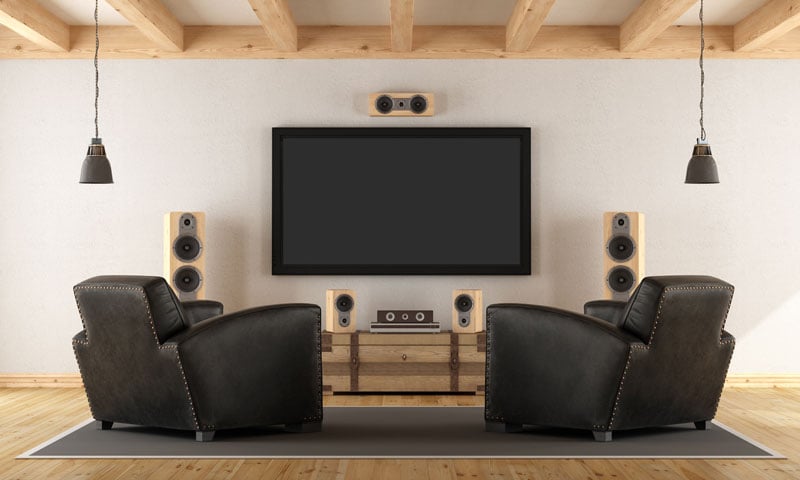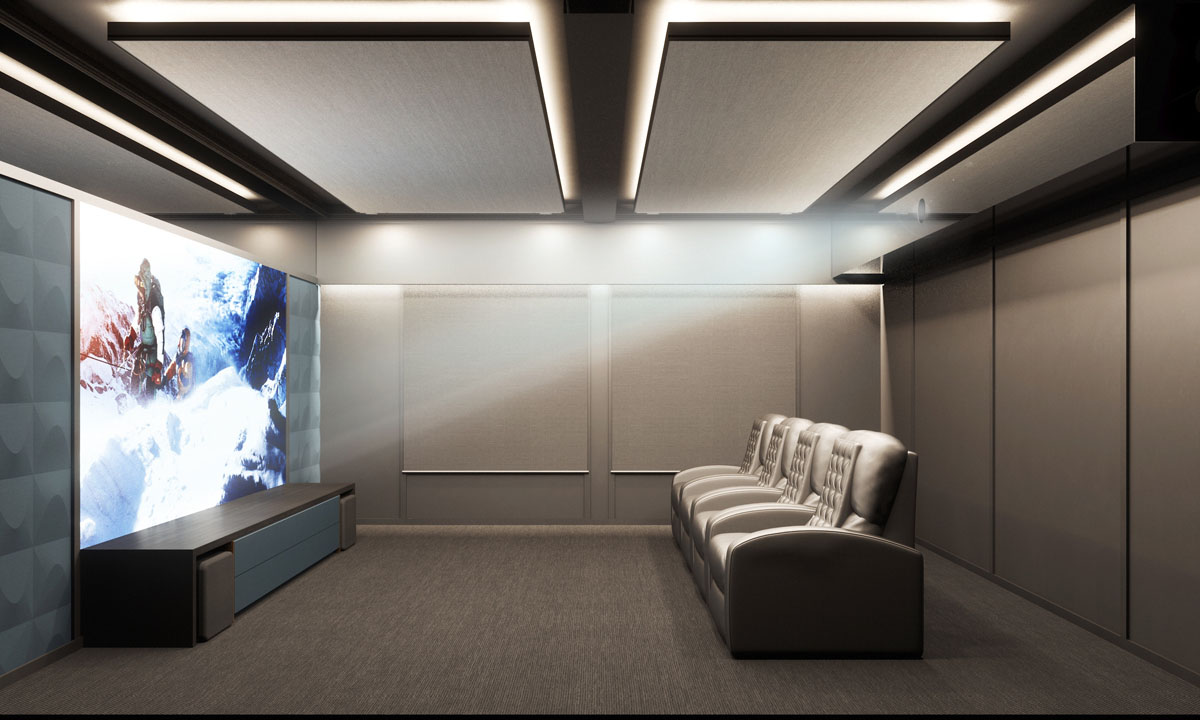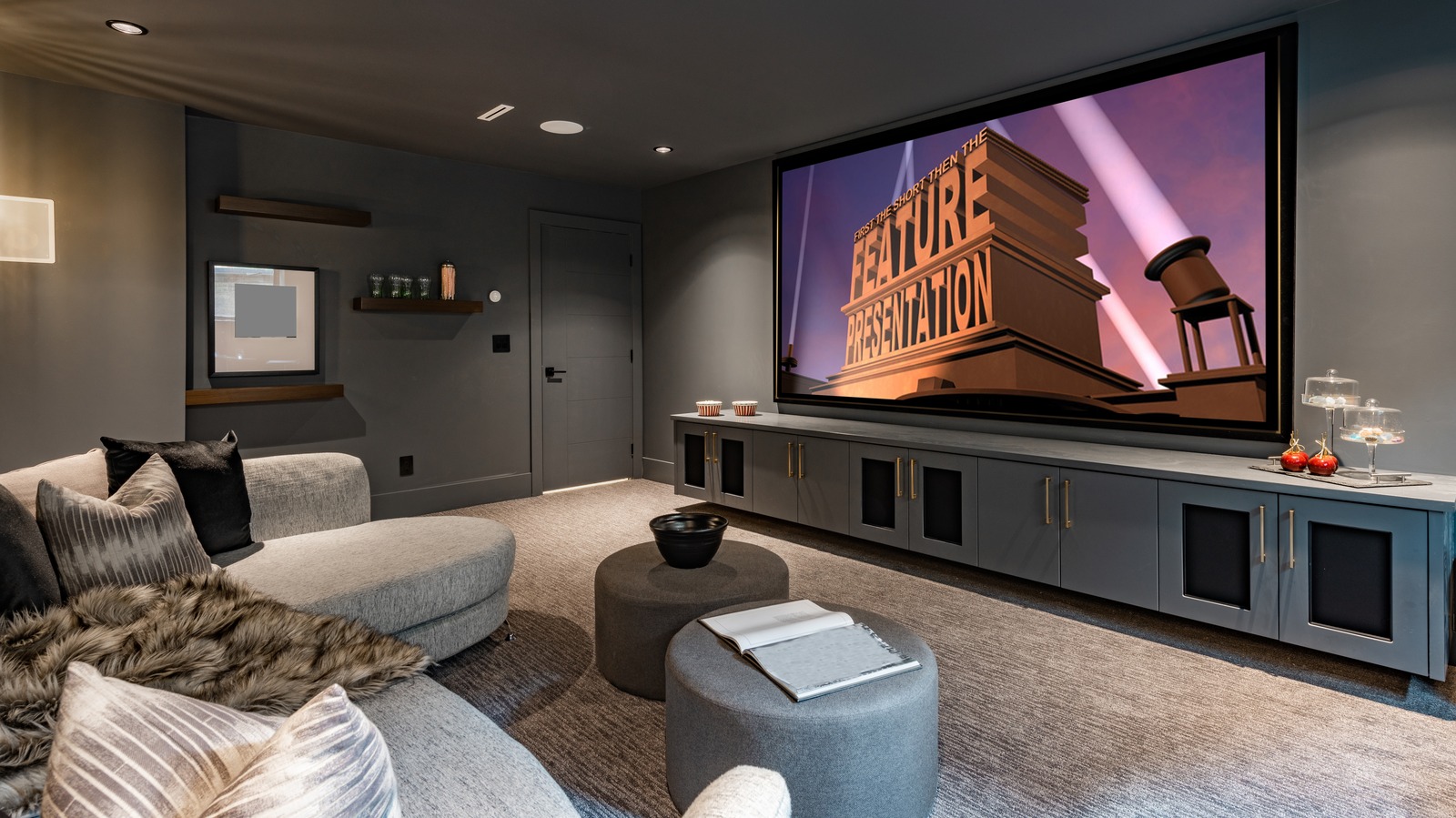Why Tampa Home Theater Installation Is a Game-Changer for Your Home Setup
Why Tampa Home Theater Installation Is a Game-Changer for Your Home Setup
Blog Article
Home Theater 101: Whatever You Required to Know for a Cinematic Experience in the house
Creating a home theater that measures up to the cinematic experience of an industrial theatre includes cautious consideration of numerous components, consisting of display selection, stereo, and area design. Each element plays a pivotal role in accomplishing the wanted ambiance and functionality. Whether you are considering the excellent display size or the intricacies of surround sound, comprehending these basics is vital. As we discover these essential components, it becomes evident that the choices made can considerably affect your general viewing experience, leaving one to consider exactly how these decisions will shape your personal movie theater.
Selecting the Right Screen
When setting up a home cinema, choosing the best screen can make or damage the seeing experience - tampa home theater installation. The screen acts as the focal point of your setup, affecting picture quality, watching angles, and general aesthetic. Secret elements to take into consideration include display resolution, size, and kind
First, establish the proper screen dimension based upon your space dimensions and seating distance. A basic guideline is to rest approximately 1.5 to 2.5 times the angled screen size for optimum viewing. Next off, choose between numerous screen types, such as fixed-frame, motorized, or retractable displays, each offering unique benefits. Fixed-frame screens generally offer the most effective photo top quality, while motorized alternatives enable for adaptability precede usage.
Resolution is another vital variable. For a truly immersive experience, think about a display made for 4K or even 8K material, making certain sharpness and clearness. Furthermore, take into consideration the screen's gain, which influences brightness and comparison; a higher gain can boost brightness in well-lit areas, while a lower gain might be much more appropriate for darker settings.
Choosing Sound Equipment
Audio tools is an important component of any home movie theater system, significantly improving the overall watching experience. The choice of audio gear can figure out the deepness, quality, and immersion of audio, critical for producing a cinematic environment.
When selecting audio devices, think about a surround stereo, which usually consists of a receiver, several audio speakers, and a subwoofer. A 5.1 or 7.1 channel system is advised, where the initial number stands for the speakers and the second the speaker, giving an immersive soundscape. The receiver is the heart of the system, handling sound and video signals, and should sustain modern-day styles like Dolby Atmos for an improved spatial experience.
Quality speakers are essential; look for designs that provide a balanced audio account with good bass response. Floor-standing audio speakers can create richer sound, while shelf options conserve room. In addition, take into consideration wireless alternatives for convenience of setup, although wired systems often supply superior efficiency.

Ideal Seating Plans
Developing an ideal home theater experience pivots significantly on optimal seating setups. The setup of seats plays an important function in both comfort and viewing top quality, straight affecting the overall motion picture experience.
First, take into consideration the screen size and watching range. A common standard is to place seats at a distance about 1.5 to 2.5 times the angled size of the display. This guarantees an immersive experience without straining the eyes.
Following, elevation is crucial. If your seats is in a tiered format, the back rows need to be more than the front to avoid blockages. For level seating, ensure that the front row is not also close to the display, and that everybody has a clear line of vision.
In addition, think about the arrangement in regards to social characteristics. Group seats can enhance the public experience, while individual seats might be chosen for individual watching.

Lastly, focus on convenience with ergonomic seating that supports extensive viewing durations. Incorporating reclining chairs or cushioned seats can considerably boost the experience, making the home theater a favored location for both entertainment and relaxation.
Lighting and Setting
Effective illumination and atmosphere are essential elements of a properly designed home theater, as they considerably affect the watching experience. The right lighting can improve the motion picture feeling, while inadequate choices can detract from content it. For ideal results, think about a split lights approach that includes ambient, task, and accent lighting.
Ambient illumination supplies basic lighting, ensuring that the area is not totally dark, which can strain the eyes. Dimmer switches are extremely suggested, enabling for changes based upon the content being viewed. Task illumination, such as wall sconces or flooring lights, offers functional illumination for activities like reading or browsing the room without interrupting the total environment.
Accent lighting can be used to highlight architectural functions or create focal points, adding depth and interest to the area. LED strip lights behind screens or along shelves can provide a refined glow that boosts the visual experience without overwhelming the audience.

Wiring and Installation Tips
A tactical electrical wiring configuration is important for accomplishing optimal efficiency in your house movie theater system. Proper wiring not just makes sure top notch audio and video signals yet likewise enhances the total aesthetic of your space. Begin by mapping out your layout, recognizing where each element will be positioned, including your display, speakers, and receiver.
When picking cords, prioritize high-quality, suitably assessed wiring to lower signal loss. HDMI cable televisions should be utilized for video links, while speaker wire must match the specifications of your audio speakers and amplifier. Select in-wall ranked cable televisions to abide by security requirements and maintain a tidy appearance.

Conclusion
In recap, developing a phenomenal home cinema experience calls for careful factor to consider of various components, consisting of display choice, audio tools, seating plans, illumination, and wiring. By focusing on these factors, a cinematic ambience can be effectively duplicated, enabling for immersive viewing experiences that measure up to conventional theater settings.
Creating a home cinema that matches the cinematic experience of a commercial theatre entails careful factor to consider of numerous parts, including display choice, sound systems, More Info and space layout.When establishing up a home movie theater, selecting the best display can make or damage the viewing experience. Next off, pick in between various screen types, such as fixed-frame, mechanized, or retracting displays, each offering distinctive benefits. For an absolutely immersive experience, consider a screen made for 4K or even 8K web content, guaranteeing intensity and clearness.In summary, creating a remarkable home theater experience calls for careful factor to consider of different elements, consisting of screen selection, audio equipment, seating arrangements, illumination, and circuitry.
Report this page